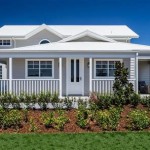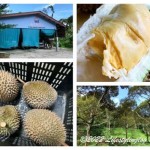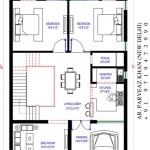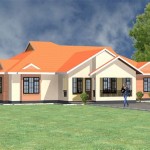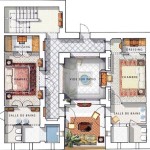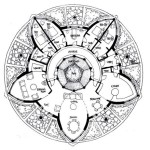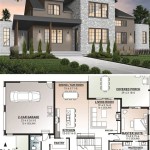Haunted House Plans: Designing a Spooktacular Home
For those who find delight in the eerie and the macabre, the concept of a haunted house might be more than just a spooky Halloween decoration. It could be a dream home, steeped in history and infused with a touch of the supernatural. While the actual presence of ghosts is a matter of individual belief, the aesthetic of a haunted house is a tangible and attainable goal. Designing a haunted house involves a blend of architectural elements, interior design choices, and even landscaping that all contribute to creating a unique and chilling ambiance.
Architectural Elements for a Haunted Home
The exterior of a haunted house plays a crucial role in setting the stage for a spine-tingling experience. Consider these architectural elements to evoke an air of age and mystery:
- Gothic Revival Style: This architectural style, popular in the 19th century, is characterized by pointed arches, intricate stonework, and often, a central tower. This aesthetic perfectly embodies the image of a haunted mansion.
- Victorian Era Designs: Victorian homes, with their ornate facades, stained-glass windows, and elaborate gables, can easily lend themselves to a haunted house theme. Their history and grandeur can be played up with elements like overgrown gardens and weathered paint.
- Asymmetrical Structures: Avoid perfectly symmetrical designs – a slight tilt, uneven gables, or a rambling layout can create a sense of unease and suggest the possibility of a structure that was built or altered over time, perhaps by different hands.
- Towering Spires and Gargoyles: These are perhaps the most obvious elements of a haunted house. They add a sense of grandeur and mystery, and can easily serve as focal points for adding eerie details like flickering lights, fake cobwebs, and spooky sound effects.
Interior Design for a Haunting Experience
The interior design of a haunted house is equally important, as this is where the ambiance truly comes to life. Creating a sense of history, mystery, and unease requires attention to detail. Here are some ideas:
- Dark and Moody Color Palette: Use deep blues, grays, purples, and even touches of black to create a somber and oppressive atmosphere. Consider textured walls like rough plaster or aged wallpaper for added authenticity.
- Dim Lighting: Avoid bright overhead lights, opting instead for dim, flickering candles or lanterns. Use sconces with exposed bulbs that cast haunting shadows. Strategic placement of lighting can emphasize certain areas of the room, adding to the sense of mystery.
- Antique Furnishings: Embrace vintage pieces, even those with a bit of wear and tear. Consider incorporating antique clocks that seem to tick at an eerie pace or old portraits with haunting eyes.
- Mirrors and Windows: Use antique mirrors with tarnished silver or cracked glass. Choose windows with thick, heavy curtains or drapes that can be drawn to create dark corners and hidden spaces.
- Strange Objects: Scatter objects that seem to be remnants of a forgotten past. These could include old books with brittle pages, worn leather trunks, or even dusty vials containing strange liquids.
Landscaping the Haunted House
The landscape surrounding a haunted house is just as important as the structure itself. Here are some ideas to create a truly eerie setting:
- Overgrown Gardens: Embrace the look of untamed wilderness. Let vines climb up walls and trees, and allow the plants to grow wild and untamed, creating a sense of abandonment.
- Twisted Trees: Plant trees with gnarled branches or ones that appear to have been struck by lightning, adding a striking and eerie element to the landscape.
- Creepy Statues: Scatter weathered statues of angels, gargoyles, or even figures of unknown origin throughout the garden. These can be used to create small vignettes that add to the feel of the haunted property.
- Gravestones and Memorials: Place a few weathered gravestones or small memorials in the garden, adding a touch of melancholy and mystery.
- A Fog Machine: Add a touch of atmosphere with a fog machine, which can be used to create a mysterious and ethereal fog that swirls around the house and garden.
While creating a haunted house might not attract actual ghosts, the goal is to create a space that evokes the feeling of a haunted home. By incorporating architectural elements, interior design choices, and landscaping details that all contribute to a sense of history, mystery, and unease, you can design a space that is truly spine-chilling.

Turning Your Library Into A Haunted House Alsc Blog

9 Haunted House Plans Ideas Maze Haunting

Best 17 Haunted House Floor Plan Ideas Plans Design

Floor Plan And Home Designs For Horror Houseplans Blog Com

Detailed Floor Plans Of Haunted Buildings In The Higgypop Paranormal

The Triangular Grid System How To Hauntrepreneurs

Haunted House Layout Layouts Haunting

Haunted Mansion Furnished 2 Minute Tabletop

How To Make A Haunted House With Pictures Wikihow

Haunted Mansion Floor Plan 1st Story By Nanakifreak13 On Deviantart

